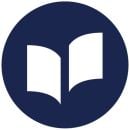Onboarding is more than just paperwork; it’s an opportunity to foster a sense of belonging from the moment a new employee first steps in the virtual or physical door.
Starting a job is an adjustment, regardless of a company’s efforts to make a new environment feel like home. Positive first impressions and introductions set the stage for what’s to come, but a lack of investment during the onboarding process can quickly result in hires feeling like a stranger in a foreign land.
In a Gallup survey, only 12 percent of employees agreed that their companies do a satisfactory job onboarding new team members. Meanwhile, according to a 2022 BetterUp survey, 69 percent of employees said they weren’t satisfied with their workplaces’ opportunities for connection, while 38 percent said they didn’t trust their coworkers.
Although these results paint a lackluster picture of the broader employee experience and engagement, some workplaces invest in creating a genuine, long-lasting sense of belonging and inclusion.
Recent and existing team members at Akeneo, BookBub and Silvertree described their personal onboarding experiences at their companies and the ways they make fresh hires feel welcomed.

The Akeneo Product Cloud helps retailers and brands orchestrate, activate and optimize product experiences.
How does your company or your immediate team welcome new hires?
Akeneo’s onboarding program was incredibly welcoming and thorough. It can be difficult for a company to strike the right balance with onboarding; some rely too heavily on pre-made videos, some focus too much on operational how-tos rather than culture and some just throw you into the deep end and let you figure it out. Akeneo — refreshingly — did not have these problems.
They offered a self-guided onboarding program that was incredibly robust, covering everything from the company’s values and culture to the role of each department and how they collaborate to create something awesome; but rather than relying just on the program, Akeneo was intentional about layering in a human element to onboarding — which is so important when joining as a remote employee.
Throughout my first few weeks, I had several check-in meetings to ensure I had all the necessary resources. Plus, I was added to a cohort with other new hires. Together, we met with each department to hear more about what they did and how they fit into the overall company structure. The cohort can even physically go to an onboarding academy located at one of Akeneo’s offices around the world; this year, it was Dusseldorf, Germany!
As a new hire, how did you benefit from these efforts?
As someone who was learning the industry from scratch, this learning academy was especially helpful. It allowed me to go through the courses at my own pace, focus on the parts I needed extra help understanding and see firsthand how the company presents itself. Combined with the small group meetings with departments, I felt like I had all the tools to succeed from the beginning.
I love working remotely, but starting at a new company can feel a little isolating, and it takes a lot of intentionality from the organization to help new remote employees feel included. Akeneo’s onboarding efforts immediately combatted any feelings of isolation, and I quickly felt invested in the team and the company as a whole.
Akeneo’s onboarding efforts immediately combatted any feelings of isolation, and I quickly felt invested in the team and the company as a whole.”
After the initial onboarding and new hire period, how do you continue fostering a sense of belonging for team members?
Casual “get to know you” and check-in meetings with the team are so important. It’s during these meetings that new hires can build camaraderie and trust with their teammates, two things that are vital not just during the initial learning curve period but during every employee’s entire tenure at a company.
Silvertree, one of Built In Boston’s Best Places to Work in 2022, is a wellness wearable platform targeted toward the aging population.
How did your company or your immediate team make you feel welcome after joining?
Before I even arrived at the office on my first day, the majority of the company had sent me little “welcome to the team” messages on Slack, which made me feel very excited to start working with them. Because the team is still rather small, I was able to sit down with each team member — both local and remote — to get to know them and how we are going to be working together in the future. One of my most memorable onboarding experiences was sitting down with our head of product to see the plan for the company and product down the road.
One of my most memorable onboarding experiences was sitting down with our head of product to see the plan for the company and product down the road.”
As a new hire, how did you benefit from these efforts?
As an engineer, it is very easy to become absorbed with my work and forget what is happening outside of my direct team. By having coffee chats with everyone across the company, I’m now always aware of the state of the company as a whole and what I can do to make an impact. Silvertree is very intentional about making all sides of business aware of the bigger picture.
Based on your experiences, what would you recommend leaders at other companies do to make new hires feel a sense of belonging?
This is probably best suited for individuals who are early in their careers, but I find that fostering a culture of continuous learning always helps me acclimate to a new team. Starting a new position tends to be daunting, especially when trying to learn a new team’s processes and tools. Encouraging new hires to ask questions makes them feel more comfortable and can even result in finding holes in the onboarding process simultaneously. Trying to learn something new daily also gives employees a focused sense of professional growth in their field.

BookBub helps readers discover, purchase and sell books that are curated by experts.
How does your company or your immediate team welcome new hires?
In every employee’s first few weeks at the company, we want to make sure that they’re both learning about their new role and understanding how their work will fit into the broader context of our company. Each new employee participates in a series of meetings in which our leaders — including our CEO — share company history, insights into what their teams do and how all the work fits together. It’s important to us that everyone has access to all of this information about our business and to our leadership team. Creating these early touchpoints encourages a sense of familiarity and comfort with team leaders, which leads to better collaboration!
We also welcome new team members by introducing them during our weekly company wide meeting. Their manager will read a few fun facts that the person submitted and a chorus of welcomes and fact appreciation results in our chat. A big part of our culture is giving people opportunities to bond over a wide range of interests. We have social Slack channels for everything from posting pictures of our pets to sharing recipes to discussing specific tv shows. Hearing a new person’s fun facts is a great way to invite them to a few social spaces.
How do these efforts build a firm foundation for new hires to succeed during the initial onboarding period and beyond?
Our philosophy on onboarding is layered: we consider an individual’s role, their team, the company and our broader community of readers and publishing partners. We don’t expect anyone to become fluent in our business or culture overnight, but throughout the onboarding experience, we want to make sure that new hires have access to information that covers all of these layers.
Our philosophy to onboarding is layered: we consider an individual’s role, their team, the company and our broader community of readers and publishing partners.”
During the initial onboarding period, many live touchpoints help new hires learn about our business and values. As a new hire continues to settle in, they’ll have regular meetings and conversations with their manager and collaborators to help them keep growing into their role.
For the company and community layers, we have lots of easily accessible documentation to help reinforce the knowledge our new hire accumulates during one-on-ones, team check-ins and company wide meetings.
We believe that team members are never done learning — there’s always room to deepen your knowledge. By creating a foundation of one-on-ones and self-guided learning resources from week one, we strive to build a culture of both collaborative and independent ongoing learning.
After the initial onboarding and new hire period, how do you continue fostering a sense of belonging for team members?
One way we work to foster belonging among team members is by building Community Resource Groups (CRGs). These identity-based groups create a safe, private space for people to share feelings and resources and spend time with teammates who may have similar lived experiences. Inclusion and belonging are key tenets of our culture and business, and our PeopleOps team supports our CRGs in planning and hosting events for bonding. We encourage people to explore CRGs when they first join and during check-ins with PeopleOps.
To foster companywide belonging, we host various in-person and virtual events that fit different interests. One example is Cat Chats: a random group gets a 30-minute event added to their calendar every few months. They can spend that time playing a provided game or puzzle or just catching up with teammates they may not regularly see. Our office has Friday afternoon events where people gather to try a new drink or snack together. Anyone can host one of these hangouts and pick a snack or drink of their choosing. We also have virtual cooking classes, book clubs and field days to make sure there are lots of fun ways for us to spend time together.











